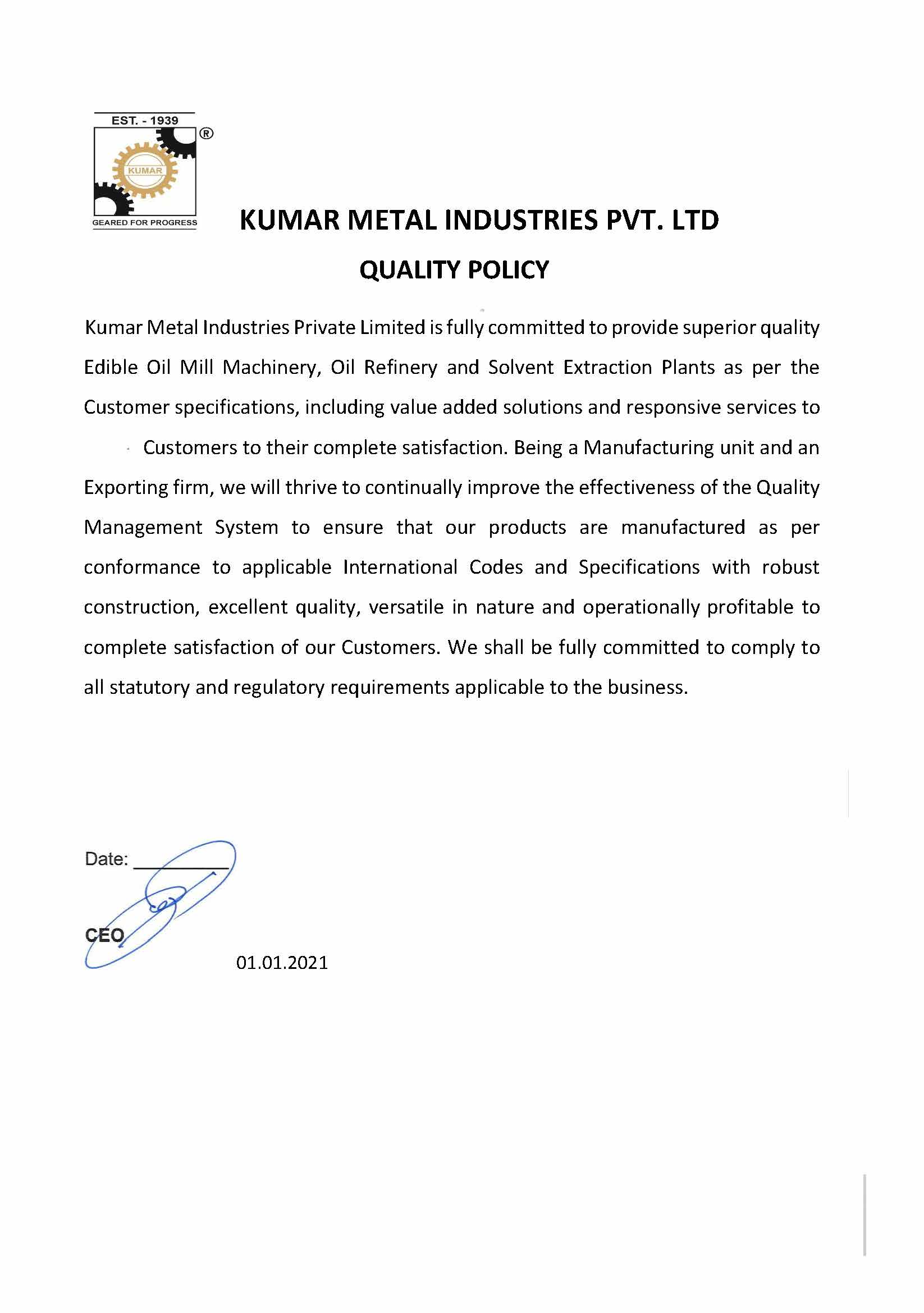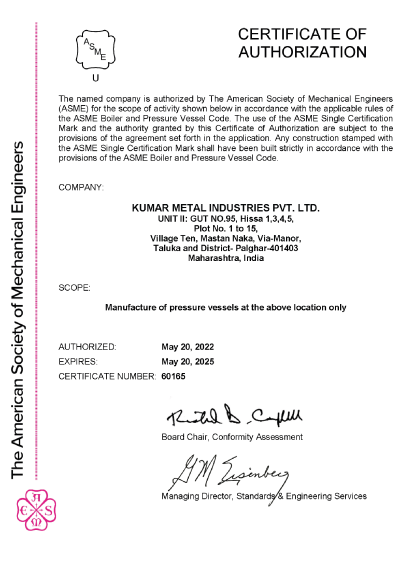
The separation of oils and fats from oil-bearing materials is carried out by rendering, pressing and solvent extraction. Of these, rendering is used to extract animal fats while pressing and solvent extraction are used for vegetable oils.
All extraction processes have common objectives - obtain the fat or oil uninjured and as free as possible from undesirable impurities, in as high a yield as is consistent with the economy of process and produce an oil cake or residue of the greatest possible value.
There are three different methods for oil extraction possible, including pressing, solvent extraction, and a combination of pressing and solvent extraction. Enzymes or carbon dioxide are often used to improve the efficiency of these methods.
Pressing is an age-old technique that has been largely and widely displaced by solvent extraction after WWII, a far more efficient process, especially for oilseeds like soybeans that have a much lower oil content. Seeds with higher oil content are pre-pressed before solvent extraction. Today, more than 98% of oil production worldwide is carried out by solvent extraction, except high-quality virgin oils. This technique is still used in rural areas, and in large facilities for pre-pressing before solvent extraction to separate the oily phase from the solid phase of the seed material.
Equipment and maintenance for solvent extraction are expensive and large facilities often use a combination of pressing and solvent extraction processes for economic viability. Pre-pressing flaked seeds leaves 15–20% oil in the oil-bearing material compacting the seed flakes into press cakes in the process. These cakes allow for good solvent contact and percolation in the extractor and result in an optimized removal of oil from the seeds. Extraction processes that combine screw press and solvent extraction have several economic advantages, including low operating costs using a screw press and higher oil yield using solvent extraction.
Extensive extraction process in large facilities results in the formation of undesired compounds in the raw oil, making it unusable for human nutrition or technical applications, making a comprehensive purification of the raw oil via refining process inevitable.
The modern screw press is a conveyor screw within a slotted container and a worm screw that reduces free space for the oil-bearing material as it moves from pitch to pitch of the screw. As the free space is progressively restricted, oil is squeezed out of the solids and through the slots.
Straight pressing is best for oil seeds with high oil content, where wastage of 8-10% of oil via the residue isn't a challenge. It is rarely used in large-scale facilities as it uses considerable horsepower, and it takes many machines for high capacity. It is impossible to reduce the oil content to less than 5% oil in the press cake, making it economically nonviable. However, there are advantages of lower investment and maintenance costs and higher oil quality. As such, this method continues to be used in rural areas and for specialty oils like extra virgin olive or rapeseed oil only pressing by a screw press and purification by sedimentation, filtration or centrifugation is allowed.
In comparison, solvent extraction removes all but 1% of residual oil, uses less horsepower, and needs less maintenance. It is efficient and reliable especially for separating large tonnages of oil from seed or cake material low in oil content. Steps in the solvent extraction process depend upon the type and quality of the oil-bearing material in question.
PREPARATION: The entire extraction process economy is based on this operation making this the most critical step in the whole process. Preparation methods vary depending on the different kinds of oil bearing materials.
Oil cake preparation steps include cracking and breaking the cake down to the desired size (1” to 1 ½”) for better extractability. Preparation steps for processing oil seeds with less than 20% oil include cleaning, disintegrating, conditioning and flaking/palliating.
EXTRACTION: Most of the oil from the prepared raw material is extracted via the counter-current extraction process for a predetermined period of time. Solvent is sprayed over the bed of material fusing the oil to the solvent. The concentration of oil in the cake and the concentration of oil in solvent (miscella) change in counter-current fashion.
DESOLVENTIZATION: Extracted meal from the extractor is transferred to the Desolventizer Toaster to recover the entrapped (soaked) solvent and to condition the desolventized material by controlling and adjusting the temperature and moisture. Conditioned meal is then bagged.
DISTILLATION: The bulk of the solvent from the miscella (oil – solvent mixture) is recovered at distillation stage. The final traces of solvent from the oil exiting the distillation zone are recovered in the oil stripper working under vacuum.
SOLVENT RECOVERY: Vapours from the DT and distillation separators are carried to condensers for vapour/solvent condensation and solvent recovery. Condensate is passed through the water separator and re-circulated to the extraction section. All extraction operations during this process are carried out in closed equipment under vacuum to avoid any solvent loss from evaporation. Air along with solvent is passed through the recuperation system where solvent traces from outgoing vent gases/vapours are recovered through absorption of the solvent in absorbing liquid.
Hexane from solvent absorbent is recovered by heating the mixture and condensing the solvent. Solvent free absorbent oil is reused for recuperation and recirculation.
Hexane, the primary solvent used worldwide, is cheap and has many advantages. It has good oil solubility at a relatively low temperature, an appropriate boiling temperature, is non-corrosive to metal, does not react chemically with the oil, is stable under the process conditions, is not mixable with water, which eases the separation of water from the seeds, and it is easily and completely removed from the residue with low energy input and without impairment of the raw oil.
Commercial hexane is the preferred solvent used in the vast majority of solvent extraction processes around the world today, due to its wide availability, relatively low cost, excellent diffusivity through oil seed cell walls, high solubility with edible oils, low solubility with water, low latent heat of vaporisation, low specific heat and moderate boiling range. It is a mixture of hydrocarbons generally boiling in the temperature range of 65–69◦C. Most commercial hexane contains approximately 65% normal hexane, and the remaining 35% is a composition of cyclopentane and hexane isomers.
Modern solvent extraction plants recover over 99.9% of the solvent pumped to the extractor. The solvent recovery system includes solvent and water vapour condensation, solvent–water separation, stripping of solvent from water and air effluent streams and heating of the solvent prior to reuse in the extractor.
Solvent extraction is by far the most economically viable method of oil extraction as the oil content in the spent solids can be reduced to approximately 1% by weight as compared to 8-10% in mechanical pressing. Mechanical pressing is also limited in how much the material can be squeezed as this process raises the temperature and can result in the cake burning. Burning also can affect the oil colour and quality after extraction. Solvent extraction uses certain pre-defined temperatures and maintains the cake quality.
In conclusion, there are several advantages to the solvent extraction process over mechanical pressing including:
- Solvent easily dissolves lipid fraction from the seeds, resulting in a comprehensive extraction. Extraction of the seeds need less thermal energy input during cooking and less mechanical energy during extraction by screw presses
- Residual oil percentage in cake is less then 1%
- Crude extracted oil is free from foots
- Optimum energy and utility consumption per metric tonne of feed material
- In large plants, full mechanical pressing is not a viable option as the cost per tonne of seed processed is far greater than that for solvent extraction plants
Request a callback
Since 1939, Kumar has been delivering dependable process engineering solutions to the oils and fats industry. We're known for our robustly engineered, versatile, and operationally profitable plant and machinery. It's why customers all over the world depend on us to solve their processing challenges, big or small. If you'd like to know more about our solutions, please fill out the form below:
"*" indicates required fields



















